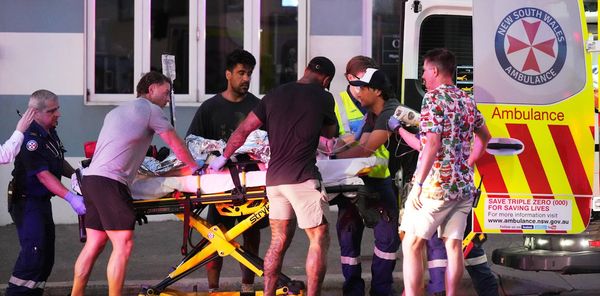
If you look up into the sky on Wednesday night, you’ll likely notice the full moon gleaming bigger and brighter than usual.
You’ll be looking at the second supermoon of the year – the term for when the moon’s orbit is closest to Earth while it is full.
“I think people forget to look up a lot of the time,” says Dr Sara Webb, an Australian astrophysicist at Swinburne University in Melbourne.
“It is nice to go out and look at the sky … and enjoy a full moon when you can.”
What is a supermoon?
Earth’s moon is not always the same distance from Earth.
“When it is at its closest approach, that is when we call any full moon a supermoon,” Webb says.
The supermoon will be about 357,000km from Earth – 27,000km closer than it normally is. “Quite a distance,” as Webb notes.
There are normally between two and four supermoons a year.
Where can I see the super moon?
The best way to view the supermoon is as it rises above the horizon, “where you can really get that perspective of it compared to things on the Earth,” Webb says.
That will fall around 6pm for people in Sydney and Melbourne, 7pm for those in London and New York, and 7:30pm for the US west coast.
Find a viewing spot that is dark and looks towards the east, which is where the moon will rise. Locations on the east coast of Australia in Brisbane and Sydney are prime viewing sites, Webb says.
Dr Bradley Tucker, an astrophysicist at the Australian National University in Canberra, says the rising supermoon will look “really cool” in any flat location, such as the US east coast or central Australia.
Webb says to avoid places crowded with buildings. “Once it gets to a certain point in the sky, it will look like any other full moon.”
The supermoon will reach its highest and fullest point in the sky about half past midnight in Australia and just after 10:30pm on the US east coast.
If you miss this supermoon, don’t fret. Another two are set to occur, on 17 October and 15 November this year.
What about the full moon lunar eclipse?
A partial lunar eclipse will also happen on Wednesday but it won’t be visible from Australia. The best spots to see that phenomenon are South America, west Africa and western Europe, Tucker says.
“It is happening during (the Australian) daytime, and the moon is going to be on the other side of the Earth,” Webb says.
The phenomenon occurs when the moon appears to be in line with the sun. Lunar and solar eclipses are chance alignments of “our three kind of heavenly bodies,” Webb says. “Our Earth is between the sun and moon.”
A partial eclipse is “not quite in alignment,” but is still something to look out for.
One of the most remarkable lunar phenomena is a full lunar eclipse – often referred to as a blood moon, Webb says.
What is the harvest moon?
The US names the moon monthly. “Historically and culturally, this was related to different things that would happen throughout the year,” Tucker explains.
September’s moon also happens to be a supermoon. It is named the Harvest Moon because the middle of September is when autumn harvest begins.
“So the Harvest Moon really doesn’t make sense for us [in the southern hemisphere] because it’s kind of the reverse,” Tucker says.







